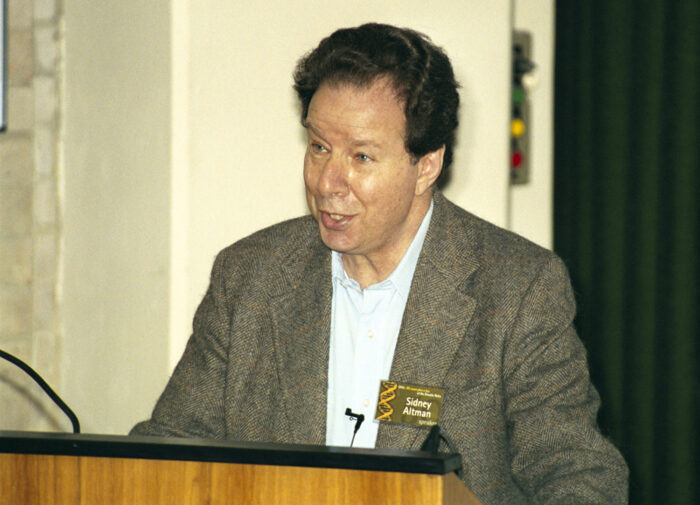Sidney Altman 1939 – 2022

Sidney Altman was a ground-breaking scientist in the field of RNA biology, whose discovery of catalytic properties of RNA led to the award of the Nobel Prize in Chemistry in 1989. His first steps to this discovery began in 1969 at the LMB, where he worked as a Postdoctoral Research Fellow, alongside Sydney Brenner and Francis Crick, in the Division of Cell Biology. During this time, he started the work that led to the discovery of RNaseP.
Initially a physicist, Sidney had become interested in molecular biology and had worked with Leonard Lerman at Colorado on the intercalation effects on DNA of acridines. In 1966, he met Sydney Brenner when he visited the Colorado laboratory and had asked for a job at the LMB. There were no vacancies at that time, but in 1968, after he had moved to Matthew Meselson’s laboratory at Harvard, he was recruited by Sydney to do some structural studies on tRNA. However, by the time Sidney arrived at LMB in 1969, Aaron Klug’s group had crystals of tRNA, and so Francis and Sydney suggested he decide on another project.
Sidney chose to join John Smith’s group working on acridine-induced mutants of tRNATyr. John was working on the suppressor tRNATyr and had shown that the mutation in going from su+ to su– involved a base change in the anti-codon. Together, they were studying the biosynthesis of tRNATyr when Sidney discovered precursor molecules – longer than normal by about 40 nucleotides. John and Sidney determined the overall sequence, and with Hugh Robertson, an RNA processing hydrolytic activity was isolated, which trimmed the extra nucleotides from the 5′ end of the molecule – RNAse P.3
The investigation of this was continued when Sidney moved, in 1971, to Yale University. The discovery that the enzyme was part protein and part RNA (M1 RNA) and that the catalytic activity lies in the RNA led to the award of the Nobel Prize for Chemistry (with Tom Cech) in 1989.
Sidney remained at Yale for the rest of his career, becoming Sterling Professor of Molecular, Cellular and Developmental Biology. He died in Rockleigh, New Jersey, aged 82, on 5 April 2022, after a long illness.
He remained a friend to many at the LMB and in Cambridge, and returned regularly to attend events here, including the 2003 DNA: 50 Years of the Double Helix Symposium, where he gave a reminiscing talk at the LMB (a modified version was published in Genetics 165: 1633-1639, 2003) and the 2014 LMB Alumni Symposium.
Further references
Yale University obituary
Nobel Prize in Chemistry 1989
Finch, John. A Nobel fellow on every floor: a history of the Medical Research Council Laboratory of Molecular Biology. Cambridge: MRC LMB, 2008. ISBN 978-1840469-40-0